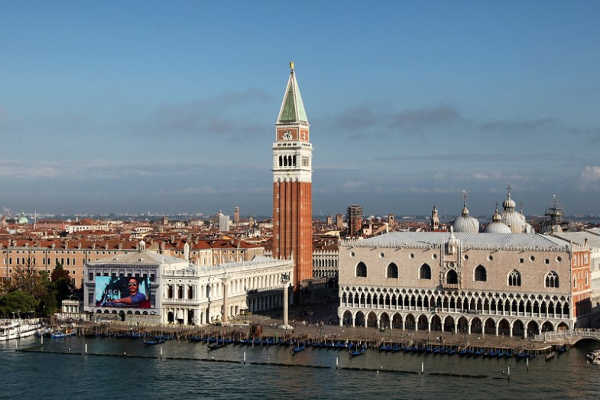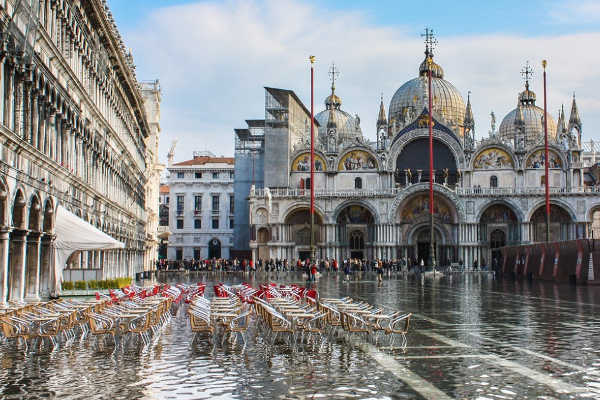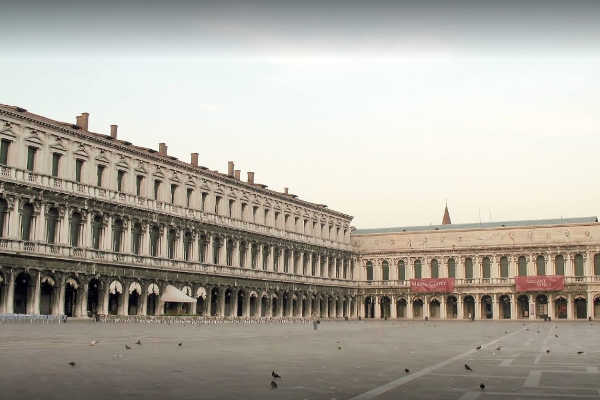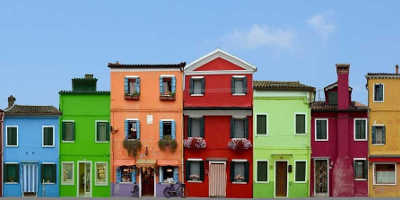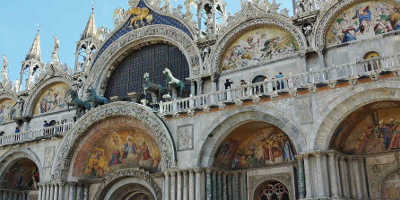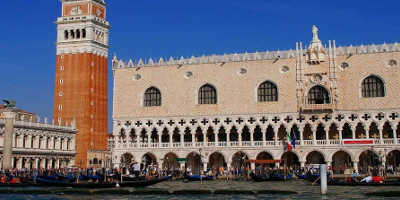St. Mark's Square (Piazza San Marco), Venice
St. Mark’s square, also known as Piazza San Marco in Italian, is the principal public square of Venice.
While it is unarguably one of the most visited sights in the city, it boasts of a history that dates all the way back to the 9th century.
History of the St. Mark’s Square
Initially, it was laid out as a small square lined with a number of trees and plenty of open space around. What’s more; it was constructed in front of the original St. Mark’s Basilica, which used to be a small chapel within the Doge’s Palace.
The Piazza quickly became the central gathering place for Venetians and was soon enlarged and paved with bricks in 1267. As its popularity soared, the administration appointed Andrea Tirali, a famous Venetian architect, to redesign the square. And in 1735, bricks were replaced with natural stone and laid in a more organized manner with marked locations for merchants who could now set up their stalls at the renovated square.
Being the largest square of the city, St. Mark’s houses important government buildings and various facilities central to the city.
St Mark’s Basilica
The centrepiece of the piazza is the magnificent St. Mark’s Basilica. This church is so named because it houses the body of Saint Mark. A couple of Venetian merchants stole the saint’s body from Alexandria and brought it back to Venice in the year 829, and the construction of the church began soon after. The basilica we see today was commissioned by Doge Domenico Contarini in the 11th Century and was the third shrine to Saint Mark built at the site.
The basilica is built in the shape of the Greek cross with a dome positioned above each arm and the central crossing point. The interior of the church is like a jewellery box, with vast expanses of the walls decorated in glittering, golden mosaics. Mosaics cover around 40,000 square feet of wall space, with each tiled image depicting a religious event or biblical story.
Looking over Saint Mark’s Square, appearing to leap from the Basilica, are the statues of the Horses of San Marco. Having been seized several times during wars and battles, these represent the power of the Venetian Republic. The origin of the horses is unknown, but they could have been made in ancient Greece as early as the 4th century BC. Originally stolen from Constantinople in 1204, the horses remained in Venice for 500 years until they were looted by Napoleon in 1797. They were finally returned by the Duke of Wellington after he defeated Napoleon at the battle of Waterloo. Due to the damage inflicted by weather and pollution, the original horses were moved inside the basilica and exact replicas were placed at the front of the building. The original horses of San Marco can still be viewed today and after seeing their beauty you will begin to understand their appeal to invading emperors and armies.
Standing beside the basilica is the campanile or bell tower that was originally built under the Doge Pietro Tribuno in the early 16th century. Sadly, the tower collapsed in 1902 but it was later rebuilt exactly as it had been… 98.6 meters tall and crowned as one of the city’s most recognizable landmarks. When visiting St Mark’s Square, be sure to listen to the five bells of San Marco chiming. Their beautiful ringing echoing off the walls of the buildings surrounding the square will make you feel as though you are a part of Venice’s rich and exciting history.
The Doge’s Palace
If you love to stroll amongst some of the most impressive architecture that Venice has to offer, then you must visit the stunning Doge’s Palace. Home to the elected ruler of Venice during the medieval and renaissance periods, this opulent palace is packed with beautiful frescoes, elaborate stuccos, and grand staircases. It now stands as a symbol of Venice’s powerful and wealthy past. The beautifully designed building has a lattice-like effect on the outer walls created by white and pink bricks and is entered through the Porta Della Carta or ‘Paper Gate’. This grand entrance was crafted by brothers Giovanni and Bartolomeo Bon and is adorned with spires and statues including the winged lion, which is the symbol of Venice and Saint Mark. Inside the palace are grand rooms decorated with stuccoes and frescos including the largest oil painting in the world, The Paradise by Tintoretto.
National Archaeological Museum of Venice
On the southern side of the Piazza San Marco is located one of the first ancient art museums in Europe, the National Archaeological Museum of Venice. Established in the 16th century by Cardinal Domenico Grimani this museum has had several homes. It was first placed in St Mark’s Library, but it was later moved to the Doge’s Palace in 1812 before finding its current home in 1912. The museum houses an incredible collection of Greek sculptures, Roman portraits, and ancient artefacts, some of which date back to the 1st century BC. Visitors will marvel at the beautiful vases, portraits of Emperors, and stunning jewellery and will come away with a far greater understanding of the incredible lives of the ancient inhabitants of Italy.
Other things to see at St Mark’s Square
With so much to see at Saint Mark’s Square, visitors could spend days strolling amongst its many attractions. If you love to explore museums, the Museo Correr is stunning to walk through with its 18th-century interiors and an extensive collection illustrating the history of Venice. If architecture is more your thing, then you can see the Bridge of Sighs or climb the clock tower to get a close look at the bell being struck on the hour by two bronze Moors. Or, if you like to take a relaxed approach to sightseeing, you can enjoy a drink at one of the cafes lining the square. Drinks here will be pricey, but sitting within the gorgeous surroundings of Saint Mark’s Square will allow you to take in the sights as you people-watch and absorb the Venetian culture.

